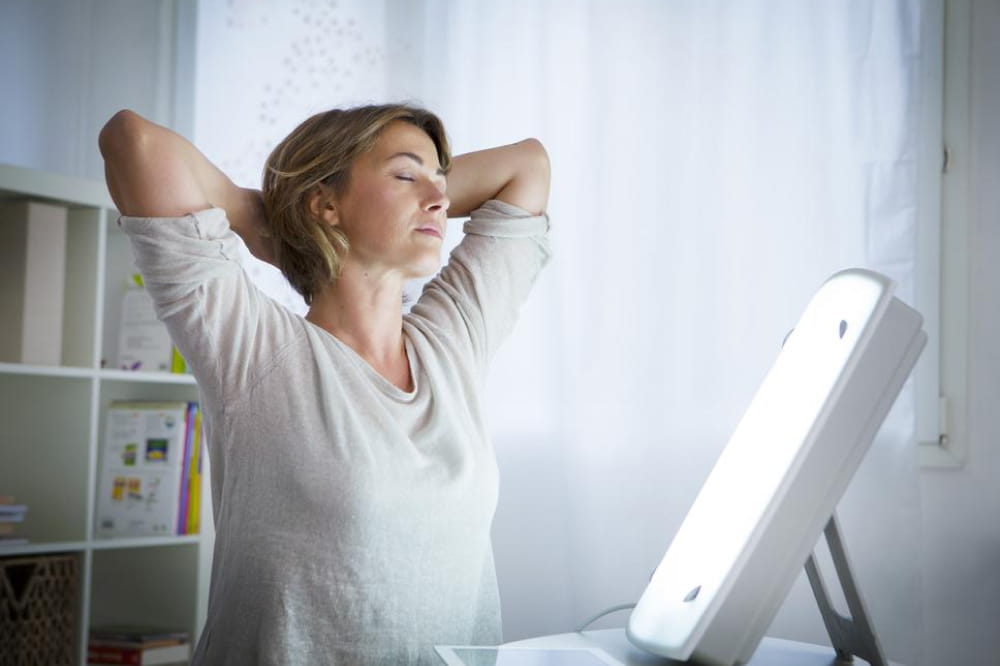
Light therapy lamps – Benefits, side effects, and where to buy
Healthcare professionals sometimes recommend light therapy to treat specific conditions and enhance overall well-being. It involves exposing oneself to the light from special lamps designed for the purpose. These lamps, also known as SAD lamps or lightboxes, replicate natural sunlight. Below, we have discussed a few valuable benefits of light therapy lamps, their potential side effects, and where to buy them. Consult a health expert before purchasing and using these lamps.
Benefits and uses of light therapy lamps
Light therapy has many advantages, some of which include the following:
Mood enhancement
It reduces the symptoms of seasonal affective disorder (SAD), a type of depression typically occurring during the fall and winter when natural sunlight is scarce. It also helps relieve other forms of depression and boost mood by promoting the release of serotonin.
Reduced non-seasonal depression
Light therapy can also manage non-seasonal depression, particularly in those who do not respond well to traditional treatments.
Increased energy and alertness
By regulating the body’s internal clock, light therapy lamps help regulate sleep-wake cycles, improving energy levels and increasing alertness.
Improved sleep quality
The lamps emit specific wavelengths of light, helping regulate sleep patterns, reducing insomnia, and enhancing sleep quality. Individuals with irregular work schedules or shift work sleep disorder may also benefit from light therapy as it resets their circadian rhythm.
Reduced jet lag and travel fatigue
Light therapy can help people adjust to new time zones when traveling and minimize the effects of jet lag and travel fatigue.
Vitamin D synthesis
Some light therapy lamps produce UVB rays, facilitating vitamin D synthesis in the skin. This is especially beneficial during cloudy months with sun exposure is limited.
Side effects of light therapy lamps
The treatment may lead to the following side effects in some people:
Eye strain and discomfort
Prolonged exposure to bright light can lead to eye strain, dryness, or discomfort. Positioning the lap correctly and using lamps with filters can minimize these effects.
Mania or hypomania (bipolar disorder)
Light therapy may trigger manic or hypomanic episodes in individuals with bipolar disorder. Those with this condition should use the treatment under expert supervision.
Skin sensitivity
Light therapy lamps emitting UVB rays may cause skin sensitivity, especially in those with certain skin conditions and those using treatments that increase photosensitivity.
Sleep disruption
Using the lamp in the evening or close to bedtime can disrupt sleep patterns instead of improving them.
Best places to buy light therapy lamps
One can purchase these lamps from the following places:
Online retailers
Various online retailers offer light therapy lamps at competitive prices. They also offer discounts and deals during seasonal transitions or holidays.
Manufacturer websites
Manufacturers often run special deals and bundles on their official websites, providing direct access to the latest models and features.
Health and wellness stores
Health and wellness stores, both physical and online, may have periodic sales and discounts on light therapy lamps and related products.
Light therapy lamps offer hope for individuals seeking relief from mood disorders, sleep disturbances, and other health challenges. However, like any therapeutic tool, they have side effects and considerations that users must be aware of. Consulting a healthcare professional before starting light therapy is crucial, especially for those with pre-existing conditions or sensitivities.




